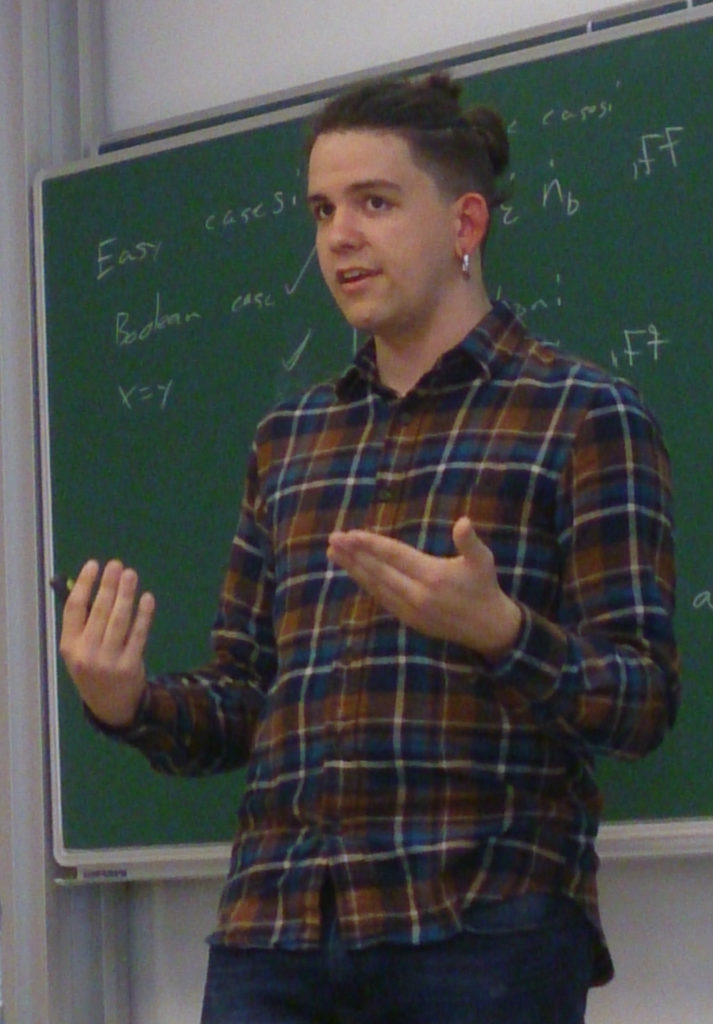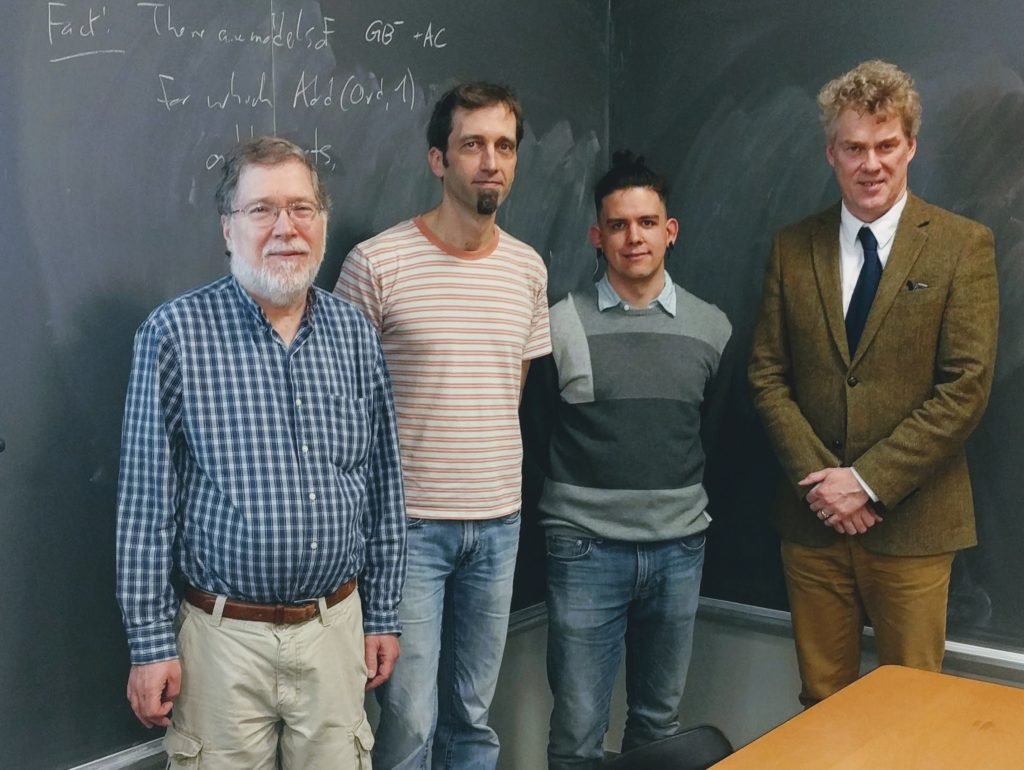Kameryn J. Williams successfully defended his dissertation under my supervision at the CUNY Graduate Center on April 6th, 2018, earning his Ph.D. degree in May 2018. He has accepted a position in mathematics at the University of Hawaii, to begin Fall 2018.
What a pleasure it was to work with Kameryn, an extremely talented mathematician with wide interests and huge promise.
Kameryn J Williams | MathOverflow | ar
Kameryn J. Williams, The Structure of Models of Second-order Set Theories, Ph.D. dissertation for The Graduate Center of the City University of New York, May, 2018. arXiv:1804.09526.
Abstract. This dissertation is a contribution to the project of second-order set theory, which has seen a revival in recent years. The approach is to understand second-order set theory by studying the structure of models of second-order set theories. The main results are the following, organized by chapter. First, I investigate the poset of T-realizations of a fixed countable model of ZFC, where T is a reasonable second-order set theory such as GBC or KM, showing that it has a rich structure. In particular, every countable partial order embeds into this structure. Moreover, we can arrange so that these embedding preserve the existence/nonexistence of upper bounds, at least for finite partial orders. Second I generalize some constructions of Marek and Mostowski from KM to weaker theories. They showed that every model of KM plus the Class Collection schema “unrolls” to a model of ZFC− with a largest cardinal. I calculate the theories of the unrolling for a variety of second-order set theories, going as weak as GBC + ETR. I also show that being T-realizable goes down to submodels for a broad selection of second-order set theories T. Third, I show that there is a hierarchy of transfinite recursion principles ranging in strength from GBC to KM. This hierarchy is ordered first by the complexity of the properties allowed in the recursions and second by the allowed heights of the recurions. Fourth, I investigate the question of which second-order set theories have least models. I show that strong theories—such as KM or
-CA—do not have least transitive models, while weaker theories—from GBC to GBC + ETR Π 1 1 —do have least transitive models. O r d
In addition to his dissertation work and the research currently arising out of it, Kameryn has undertaken a number of collaborations with various international research efforts, including the following:
- He is a co-author on The exact strength of the class forcing theorem. [bibtex key=”GitmanHamkinsHolySchlichtWilliams:The-exact-strength-of-the-class-forcing-theorem”]
- He is co-author on a current joint project with Miha Habič, myself, Daniel Klausner and Jonathan Verner concerning the nonamalgamation phenomenon in the generic multiverse of a countable model of set theory.
- He is co-author on a current joint project with myself and Philip Welch concerning the universal
Σ 1



